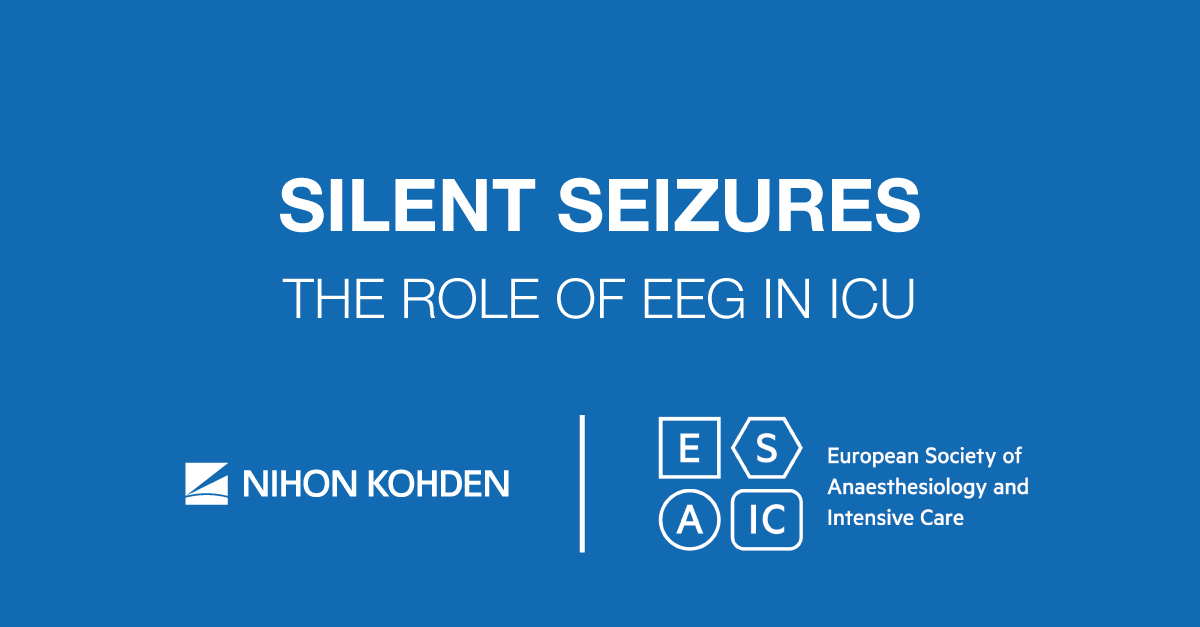Silent Seizures - The Role of EEG in ICU
26. March 2025

Nihon Kohden Europe, in partnership with the European Society of Anaesthesiology and Intensive Care (ESAIC), is excited to share the third episode of our podcast series titled "Silent Seizures: The Role of EEG in ICU." This episode features an in-depth discussion with two esteemed professionals, Prof. Chiara Robba from Policlinico San Martino in Genoa, Italy, and Prof. Mathias Gelderblom from the University Medical Center Hamburg's Neurology Department in Germany. Together, they explore the crucial yet frequently overlooked importance of using EEG monitoring in intensive care units.
Why This Podcast Matters
This episode is essential for intensivists, anesthesiologists, and neurologists aiming to enhance neurocritical care. It underscores that EEG is not an overly complex tool meant only for neurologists but is an accessible, valuable technique for monitoring critical patients in ICU settings. The podcast is a reminder of the growing importance of EEG in improving patient outcomes and addressing previously undetected conditions in neurocritical care.
If you’re keen to learn more about how EEG is shaping the future of ICU care, don’t miss this engaging episode with Prof. Chiara Robba and Prof. Mathias Gelderblom.
Key Highlights of the Episode
1. NCSE: An Underestimated Danger in the ICU
In ICUs, non-convulsive status epilepticus (NCSE) is a hidden threat. Many unresponsive ICU patients might be experiencing silent seizures that go undetected using traditional imaging tools like CT or MRI. These tools often miss functional abnormalities, leading to delayed or missed diagnoses. Both experts stress the importance of integrating EEG into ICU monitoring to catch NCSE early, ensuring prompt treatment and avoiding detrimental outcomes for patients.
2. Overcoming Barriers: Making EEG More Accessible for Intensivists
Historically, EEG has been seen as a tool primarily for neurologists, which has made ICU clinicians hesitant to adopt it. However, Prof. Gelderblom highlights that setting up and interpreting EEG is far less complicated than many assume, comparing it to how echocardiography has become a standard tool in ICUs. With modern advancements like Nihon Kohden’s CerebAir, a portable EEG system that uses a minimal electrode setup (6-8 electrodes), EEG is now much more accessible and feasible for routine ICU use.
3. Quality Over Quantity: The Importance of a Strong EEG Signal
An essential point made during the podcast is that quality trumps quantity when it comes to EEG signals. A high-quality EEG with a strong signal-to-noise ratio is crucial for accurate diagnosis, regardless of the number of electrodes used. This reflects Nihon Kohden’s commitment to delivering reliable, noise-resistant EEG technology, allowing clinicians to make confident, data-driven decisions.
4. Addressing the Clinical Gap: EEG vs. Imaging in the ICU
Prof. Robba highlights a significant gap in neurological monitoring: it is often easier to obtain a CT or MRI scan than an EEG in ICU settings, despite the complexity of transporting critically ill patients for imaging. CerebAir, Nihon Kohden's bedside EEG solution, aims to close this gap by providing immediate, non-invasive monitoring for neurological conditions, right at the patient's bedside.
5. The Future of EEG: AI, Automation, and Expanded Clinical Applications
The discussion also touches on the exciting future of EEG in the ICU. While artificial intelligence (AI) and machine learning are still being integrated into EEG diagnostics, trends such as automated seizure detection are already transforming ICU care. The speakers envision EEG playing a broader role in managing neurological conditions like vasospasm and subarachnoid hemorrhage, positioning EEG as a pivotal tool in neurocritical care.
Listen to the Podcast Here:
ESAIC Website - https://esaic.transistor.fm/s4/4
YouTube - https://www.youtube.com/watch?v=QitDNv3CSGs&t=5s
Apple Podcasts - https://podcasts.apple.com/us/podcast/esaic-podcast-series-on-anaesthesia-intensive-care/id1608044069?uo=4
Spotify - https://open.spotify.com/show/4ZTgr2TzEzDo664YRaqNGR